A Water Skier on Florida Waters: Legally Skiing in Specific Situations Explained
Water skiing is a popular recreational activity in Florida, known for its warm weather and numerous waterways. In order to ensure the safety of everyone involved, the state has established specific laws and regulations regarding when and where water skiing is permitted. One important aspect of these regulations is the timeframe during which water skiers are allowed to participate in the activity.

According to Florida law, water skiing is only legal during daylight hours - from one-half hour before sunrise to one-half hour after sunset 1. This limitation is primarily focused on safety, as visibility is crucial for both the water skier and the boat operator during the activity. By restricting water skiing to daylight hours, the risk of accidents or dangerous situations is significantly reduced.
Key Takeaways
- Water skiing in Florida is only allowed during daylight hours for safety reasons.
- The legal timeframe for water skiing extends from one-half hour before sunrise to one-half hour after sunset.
- Florida's water skiing laws and regulations help ensure the safety of water skiers, boat operators, and other waterway users.
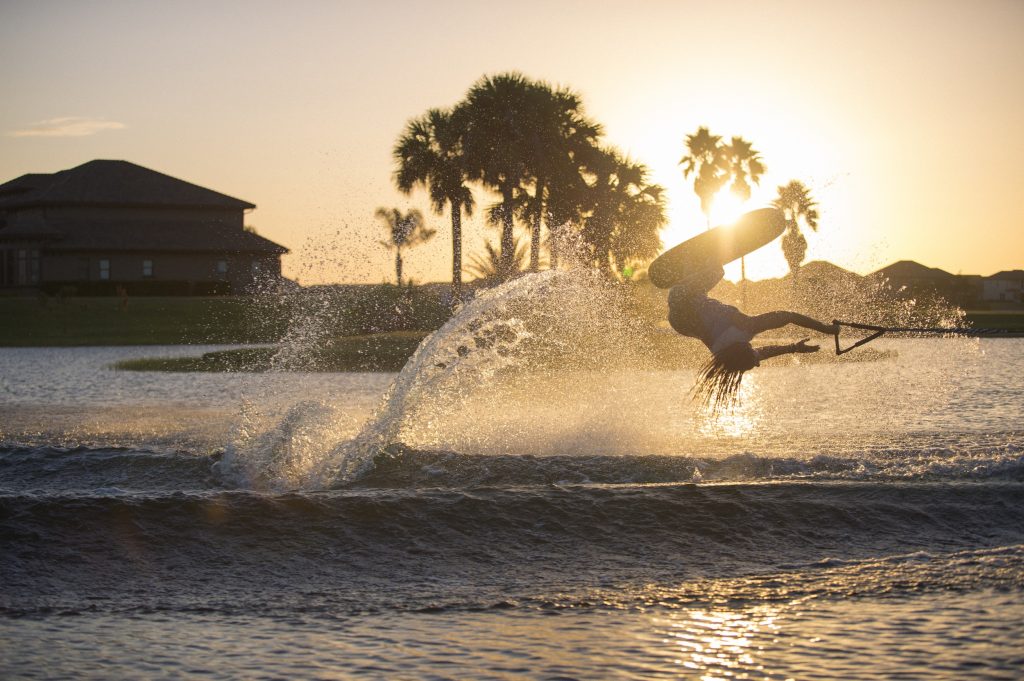
Understanding Florida Water Skiing Laws
Overview of Legislation
Florida water skiing laws are in place to ensure the safety of both water skiers and other individuals using the waterways. According to Florida law, water skiing is only legal during daylight hours, specifically from one-half hour before sunrise to one-half hour after sunset. Skiers must also adhere to the four nautical mile limit from the shore to ensure they are skiing within legal boundaries.

Regulations for Operators
Operators of vessels towing water skiers need to be vigilant about maintaining safe distances from other vessels and objects. A distance of at least 300 feet must be maintained from divers-down flags or buoys on open waters, and at least 100 feet from such flags or buoys on rivers, inlets, or navigation channels ([]https://www.boatsmartexam.com/knowledge-base/article/floridas-waterskiing-regulations/)). Additionally, vessels must be equipped with a wide-angle mirror or similar device to allow the spotter to keep track of the skier, and a whistle or other signaling device to alert the skier of any potential danger.
Age Restrictions
Although specific age restrictions for water skiers in Florida are not readily available, operators of vessels towing water skiers must abide by the minimum age requirement for boating. In Florida, operators born on or after January 1, 1988, are required to obtain a Boating Safety Education Identification Card, after successfully completing a boating education course or temporary certificate examination.
Penalties for Violating Laws
Violating water skiing laws in Florida can lead to serious consequences. Depending on the severity of the violation, fines and penalties may be imposed on the water skier or vessel operator. While specific penalties for water skiing violations are not provided, it is essential for all individuals involved to abide by the state's regulations to ensure a safe and enjoyable experience on the water.

The Role of Safety Measures
Required Safety Equipment
Safety equipment is essential for water skiers in Florida. One critical piece of safety gear is a U.S. Coast Guard-approved personal flotation device (PFD), such as a life jacket. This equipment provides buoyancy and helps to keep the skier afloat in case of a fall. Additionally, wearing a properly fitted and secured PFD reduces the risk of drowning for both experienced and novice water skiers.
Safe Practices
Adherence to safe practices while water skiing is necessary for everyone's safety. This includes maintaining appropriate speed limits and avoiding sharp turns that could lead to accidents. Water skiers should never ski alone, and at least two observers should be present on the boat to ensure the water skier’s safety. Moreover, skiing should only be done during designated daylight hours, which is from one-half hour before sunrise to one-half hour after sunset.
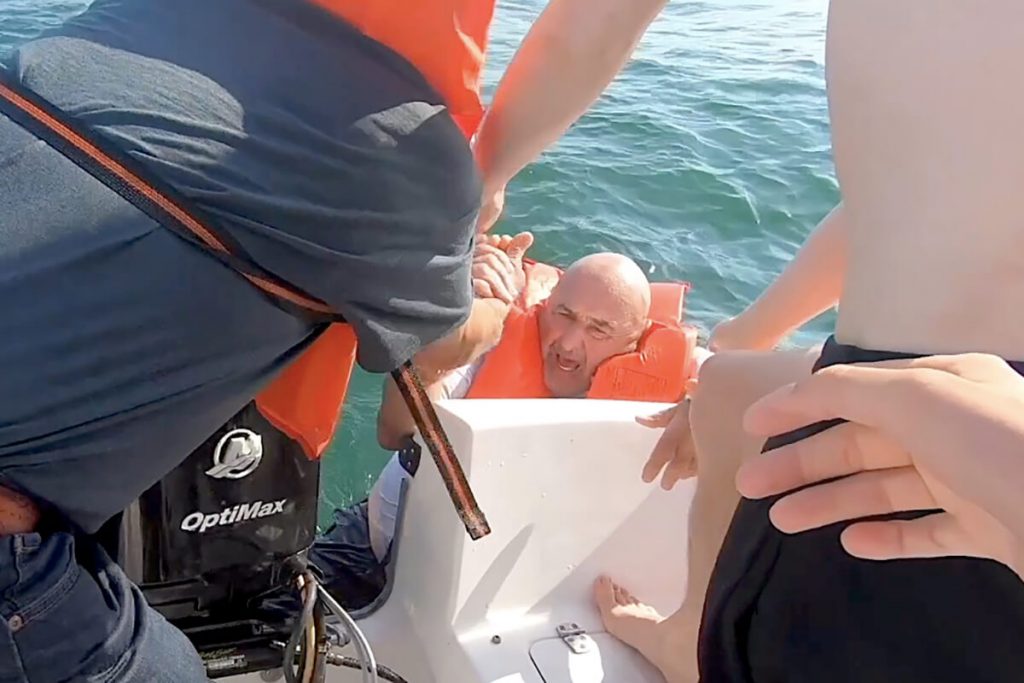
Consequences of Unsafe Skiing
Engaging in unsafe water skiing practices can have severe repercussions. Accidents resulting from a lack of safety measures can lead to injuries, damages to property, and even fatalities. Moreover, those who violate safety regulations outlined by Florida law may face legal penalties.
Skiing under Influence
Operating a boat or water skiing while under the influence of alcohol or drugs is strictly prohibited. It impairs the judgment and reaction time of both the boat operator and the water skier, increasing the risks of accidents. In Florida, the legal limit for alcohol consumption while operating a boat is the same as for driving a car: 0.08% blood alcohol content.
Role of Safety Observer
The presence of a safety observer on board the towing vessel is crucial. The safety observer assists the boat operator in monitoring the water skier's well-being and alerts them to any potential hazards. Observers help ensure that the boat operator follows all safety regulations and can focus on navigation, while the skier receives appropriate assistance if needed, leading to a safer water skiing experience for everyone involved.
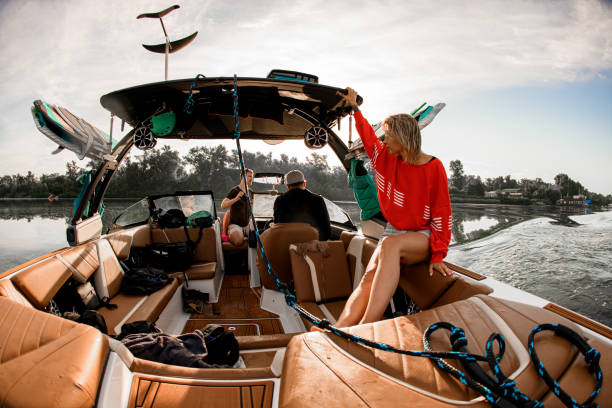
Boats and Vessels Requirements
Operating a Boat
When operating a boat for water skiing in Florida waters, the boat operator must adhere to specific regulations to ensure safety. These regulations mandate the presence of an additional person on board to serve as an observer, who must be at least 14 years of age. The observer is responsible for monitoring the progress of the water skier and communicating with the boat operator in the event of any issues.
Vessel Specifications
Various types of vessels, including boats and jet skis, can be used for water skiing, provided they meet necessary requirements under Florida law. One key specification is that water skiing activities must occur within four nautical miles of shore to maintain distance from the coastline or islands. Venturing further into open waters for water skiing is not permitted.
Importance of Rear View Mirror
While Florida regulations require either an observer or a wide-angle rear view mirror for water skiing, the latter can prove beneficial for both boat and jet ski operators. A wide-angle rear view mirror mounted in a proper position on the vessel allows the operator to have clear visibility of the water skier's progress without relying on an additional observer. This feature enhances the overall safety of the skiing experience, ensuring prompt reaction to any unforeseen circumstances.

Understanding Water Skiing Conditions
Daylight Skiing Specifications
In Florida, water skiing is only legal during specific hours of the day, specifically from half an hour before sunrise to half an hour after sunset. This ensures that the water skier, as well as other people using the waterways, have optimal visibility. Florida law strictly prohibits water skiing beyond these scheduled times, prioritizing safety during daylight hours.
Weather Impact on Skiing
Not only is daylight crucial in water skiing, but so are weather conditions. Water skiing in Florida waters should only be done when the weather is clear and safe. Skiers should avoid bad weather, such as storms, strong winds, or heavy rain, as these conditions can drastically impact visibility and the overall stability of the skier.
Waterway Conditions
Florida's waterways, including rivers and lakes, provide various options for water skiing. However, it is essential to be familiar with local rules and regulations concerning water skiing in specific waterways. For instance, skiers should maintain a distance of at least 300 feet from divers-down flags or buoys on open waters and at least 100 feet from flags or buoys on rivers, inlets, or navigation channels. Moreover, water skiing is not allowed in certain areas, such as within 100 feet of a swimmer or 200 feet of a public beach, swimming area, or swimming pool. Skiers should be aware of these restrictions to avoid conflicts and potential legal penalties.
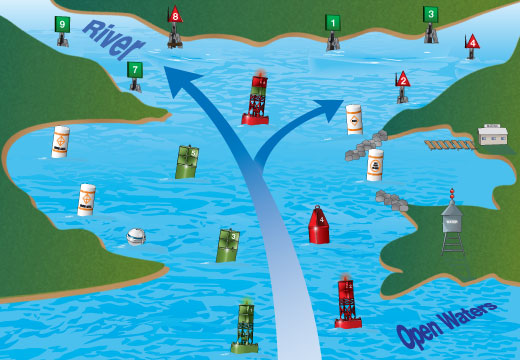
Navigating Florida Waters
Florida waters are known for their beauty and opportunities for water activities, but they are also regulated to ensure the safety of both water enthusiasts and marine life. This section will cover the key aspects of navigating Florida waters, including understanding no-wake zones, designated areas, and navigation symbols.
Understanding No-Wake Zones
No-wake zones are areas in Florida waters where boats are required to travel at idle speed or slow enough to produce minimal wake. These zones are designed to protect sensitive marine habitats and ensure a safe and pleasant boating environment. Boaters should be familiar with the signs indicating no-wake zones and maintain a safe and responsible speed in these areas.
Navigating through Designated Areas
Florida waters include designated areas specifically designed for specific water activities, such as water skiing, fishing, or swimming. It is essential to follow the regulations in place for each area and respect other users' rights to enjoy the water safely. For water skiers, it is important to note that they can only ski in Florida waters during specific times—half an hour before sunrise to half an hour after sunset.

Role of Navigation Symbols
Navigation symbols play a crucial role in guiding watercraft users and water skiers through Florida waters. One important symbol is the divers-down symbol, which alerts boaters to the presence of divers in the area. The divers-down symbol must be at least 12 inches by 12 inches in size and can appear on a flag or a buoy. Boaters should be cautious and maintain a slow speed when encountering the divers-down symbol to ensure the safety of divers.
In conclusion, navigating Florida waters safely and responsibly requires an understanding of no-wake zones, designated areas, and key navigation symbols. By adhering to these regulations, water enthusiasts can enjoy the natural beauty and recreational opportunities offered by Florida waters.
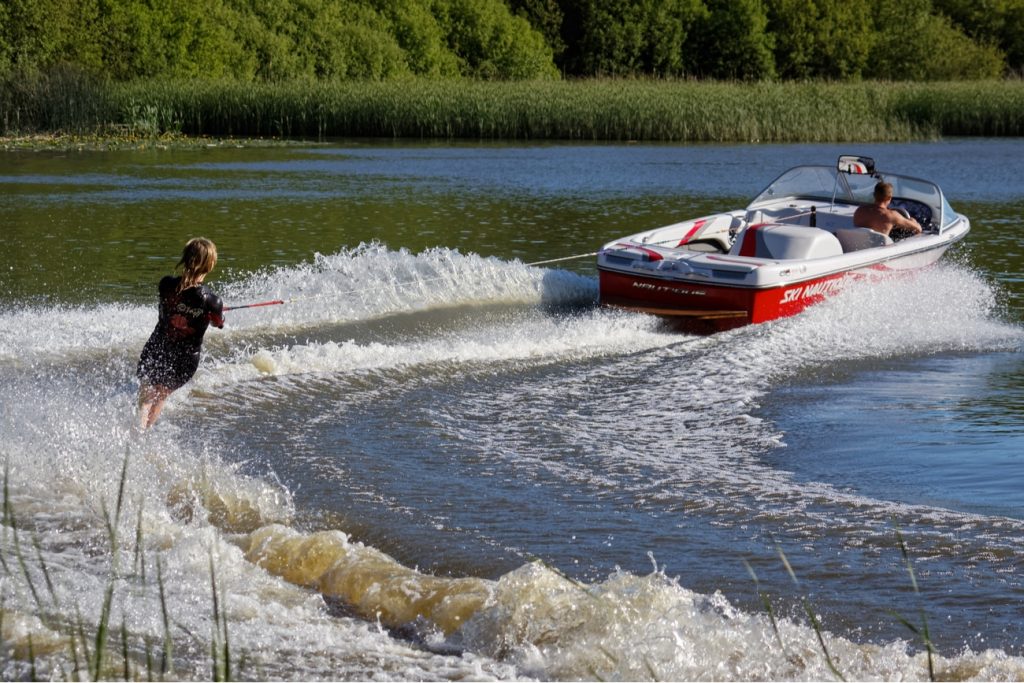
Responsibilities of Water Skiers
In Florida waters, water skiers must adhere to certain responsibilities to ensure a safe and enjoyable experience. This involves having the appropriate equipment, following best practices, and utilizing proper hand signals when necessary.
Equipments for Skiers
Water skiers in Florida should ensure they have all the necessary equipment for a safe experience on the water. This includes:
- Water skis: Skiers should use well-maintained, appropriate-sized skis designed for their skill level and body size.
- Life jacket: A properly fitted, Coast Guard-approved life jacket is essential for all skiers.
- Wetsuit or rash guard: To prevent chafing and offer some protection from the elements, a wetsuit or rash guard is advisable.
- Tow rope: A strong, securely fastened tow rope is essential for connecting the skier to the boat.
- Safety equipment: Skiers should carry a whistle or other signaling device in case of emergencies.

Best Practices for Skiers
Safe skiing in Florida waters involves following these best practices:
- Only ski during daylight hours: Florida law mandates that water skiing is only legal from half an hour before sunrise to half an hour after sunset. 1
- Maintain proper distances: Skiers must keep at least 300 feet away from divers-down flags or buoys on open waters and 100 feet away on rivers, inlets, or navigation channels 2.
- Ski within your skill level: Attempting maneuvers beyond your ability can endanger yourself and others.
- Use a spotter: Florida law requires a spotter, in addition to the boat operator, to observe the skier's progress 3.
- Be aware of your surroundings: Stay alert for obstacles, other boats, and swimmers in the vicinity.
Role of Hand Signals
Hand signals are crucial for communication between the water skier, the boat operator, and the spotter. Some common hand signals are:
- Thumbs up: Increase speed.
- Thumbs down: Decrease speed.
- Patting head: Turn back to the dock.
- Clasping hands over head: Skier is okay.
- Slashing motion across neck: Stop the boat immediately.
In summary, water skiers in Florida should prioritize safety by ensuring they have the appropriate equipment, follow best practices, and utilize clear hand signals for communication.
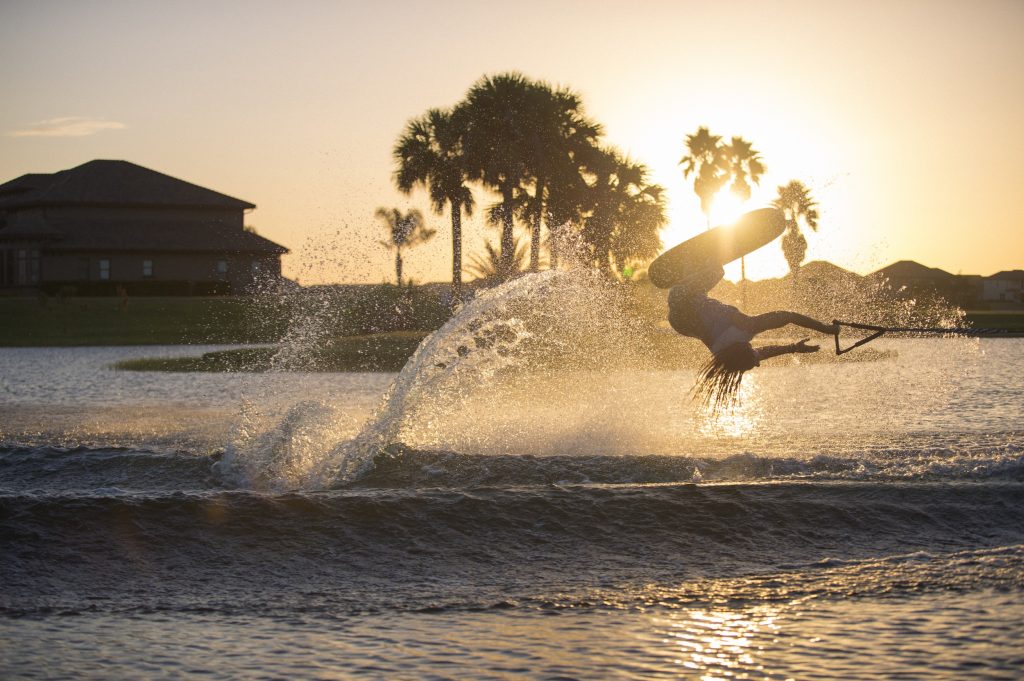
Florida's Unique Water Skiing Events
Competitive Water Skiing
Florida is home to several competitive water skiing events that attract both local and international participants. These events showcase the skill and talent of water skiers in various categories such as slalom, tricks, and jump. They also follow strict safety regulations to ensure that all participants ski legally on Florida waters, keeping the sport enjoyable and secure.
Water Skiing Tournaments
Numerous water skiing tournaments take place throughout the year in Florida, offering an exciting opportunity for both amateur and professional athletes to compete. Some of these events include the Florida State Water Ski Championships and the U.S. Open Water Ski Racing National Championships. These competitions not only promote the sport but also provide a platform for skiers to display their skills and gain recognition.
Florida State Water Ski Championships:
- Date: Annually in July
- Location: Varies
- Categories: Slalom, Tricks, Jump
U.S. Open Water Ski Racing National Championships:
- Date: Annually in October
- Location: Long Beach, California
- Categories: Water Ski Racing

Marine Parades and Exhibitions
In addition to competitive events, Florida also hosts various marine parades and exhibitions that showcase water ski performances. These events attract a broader audience and promote the century-old sport to locals and tourists alike. Examples of such events include the Winter Haven Chain of Lakes Boat Parade and the Miami International Boat Show. These events often feature skilled water skiers performing amazing stunts and routines, creating a spectacular sight for spectators.
Winter Haven Chain of Lakes Boat Parade:
- Date: Annually in December
- Location: Winter Haven, Florida
- Activities: Boat parade, water ski performances
Miami International Boat Show:
- Date: Annually in February
- Location: Miami, Florida
- Activities: Boat displays, water sports demonstrations
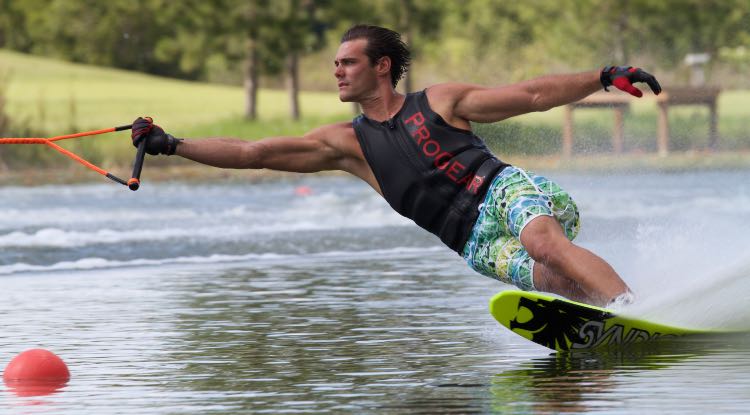
Florida's Top Water Skiing Locations
Beaches for Water Skiing
Florida's coastline boasts many beautiful beaches suitable for water skiing. With clear turquoise waters and white sandy shorelines, skiers can experience incredible adventures near popular coastal locations. Some renowned beach spots for water skiing include Miami Beach, Daytona Beach, and Clearwater Beach, providing ample space to glide along the water and enjoy stunning ocean views.
Florida's Lakes and Rivers
The Sunshine State is home to numerous lakes and rivers perfect for water skiing. Winter Haven, for instance, is known as the Water Ski Capital of the World and serves as a hub for water skiers of all levels. Other popular locations include Lake Okeechobee, Lake Tohopekaliga, and Lake Apopka, offering water skiing enthusiasts with bountiful options to practice their skills and enjoy thrilling water sports.
Central Florida is also a water ski hub, with various lakes available for training and recreational skiing. Some renowned facilities, such as the Cypress Gardens, provide excellent water ski experiences to both novices and experts.
Intracoastal Waterway and Lake Okeechobee
The Intracoastal Waterway, which extends along Florida's east coast, offers a unique environment for water skiing. Spanning 3,000 miles, the protected waters allow for smooth surfaces and an ideal setting for water skiers to test their abilities without the challenges of ocean waves.
Additionally, Lake Okeechobee is a favorite among water skiing enthusiasts. As the largest lake in Florida, it provides ample space for skiers to navigate and enjoy the sport while surrounded by diverse wildlife and picturesque landscapes.
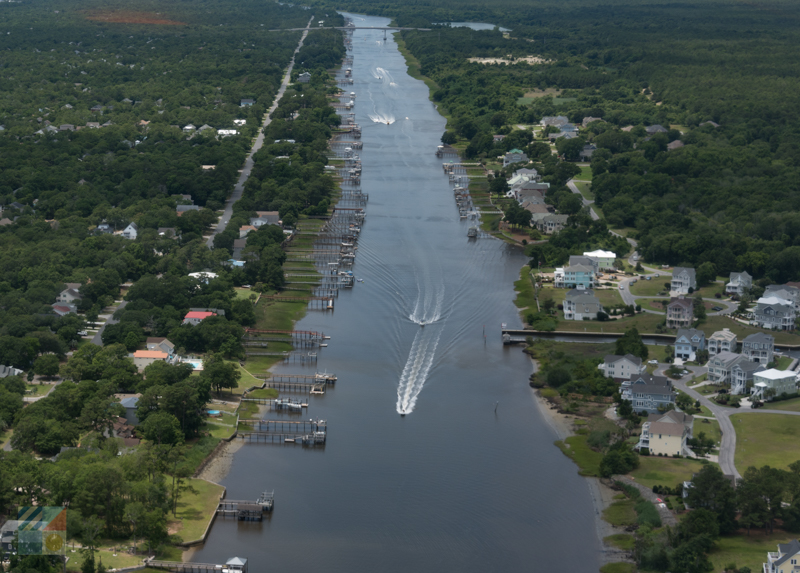
Additional Considerations for Water Skiing in Florida
Respecting the Environment
Water skiing in Florida is subject to certain regulations to ensure the safety of participants and the preservation of the environment. It is important for water skiers and boat operators to adhere to these rules, as well as take additional measures to protect Florida's natural resources. For instance, always ensure proper disposal of trash and avoid disturbing vegetation or wildlife habitats while skiing.
Florida law permits water skiing from one-half hour before sunrise to one-half hour after sunset. This time restriction helps reduce disturbances in the aquatic ecosystem and minimizes the risk of collisions with other vessels or fixed objects.
Interaction with Wildlife Conservation Commission
The Fish and Wildlife Conservation Commission plays a significant role in managing Florida's diverse ecosystems, wildlife, and habitats. As water skiers and boaters spend time on Florida waters, it is essential to be aware of the commission's rules and regulations to avoid violating any laws related to wildlife and environmental conservation.
In some instances, water skiers may encounter protected species or areas under the jurisdiction of the commission. In such cases, it is crucial to maintain a safe distance from these species or areas, report any illegal or suspicious activities, and adjust water skiing practices to reduce any potential negative impacts on the environment.
By following the established guidelines and showing respect for the environment and wildlife, water skiers can enjoy their sport responsibly and contribute to the conservation efforts in Florida.

Frequently Asked Questions
What are the legal hours for water skiing in Florida?
Water skiing in Florida is only permitted during daylight hours, specifically from a half-hour before sunrise to a half-hour past sunset. Any skiing beyond this timeframe is considered illegal and carries a hefty fine. It is important to note that boat lights cannot be used to extend the water skiing time beyond these daytime limits.
What safety equipment is required for water skiing in Florida?
Mandatory safety gear for riders and towed individuals includes life jackets approved by the U.S. Coast Guard. Also, any vessel towing a skier must be equipped with either a wide-angle rearview mirror or an additional person in the boat to observe the progress of the person being towed.
Are there designated areas for water skiing in Florida?
While Florida does not have specific designated areas for water skiing, there are certain restrictions to maintain safety. According to Florida's waterskiing regulations, a vessel operator towing a skier may not pull the skier close enough to a fixed object or another vessel that poses a risk of collision.
What are the age restrictions for water skiing in Florida?
There are no specific age restrictions for water skiing in Florida, but it is essential for all participants, regardless of age, to follow safety regulations, including wearing life jackets. It is also advisable that young children, inexperienced skiers, and elderly individuals take extra precautions and consider their abilities before water skiing.
What permits or licenses are needed for water skiing in Florida?
No special permits or licenses are required for water skiing in Florida. However, individuals operating a motorized watercraft, including tow vessels, must complete an approved boater education course and carry their boater education card while operating the vessel.
Are there specific boating laws that apply to tow vessels in Florida?
Yes, there are specific laws that apply to tow vessels in Florida. For example, a person may not operate a vessel towing a water skier unless it is equipped with a wide-angle rearview mirror or an additional person in the vessel to observe the skier's progress. Also, the operator must ensure that the person being towed is not pulled too close to other vessels or fixed objects, posing a risk of collision.
Footnotes
- Florida law on water skiing ↩ ↩2
- Florida's Waterskiing Regulations and Diver-Down Requirements ↩
- Chapter 327 Section 37 - 2012 Florida Statutes ↩
Charlie is Editor-in-Chief of Sea Magazine